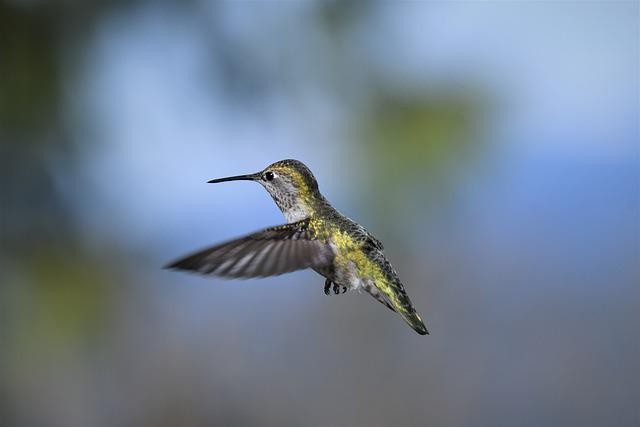
Researchers took Anna's hummingbirds to the mountains to see how the different climates affect everyday activities.
Changing temperatures all over the world's habitat are affecting animals that might have difficulty when going to a new place. Another is how the study wants to understand how species adapt to such situations, like these high-energy birds.
Hummingbirds Living in Higher Environments
Animals living in higher altitudes have to deal with lower temperatures, thinner and less oxygen to make breathing difficult, reported Science Alert.
A group of Anna's hummingbirds (Calypte anna) was involved in a study that had a group of them taken up to 1,200 meters, unlike their typical habitat.
Their metabolic rates, on the other hand, slowed as they hovered. They also flew for short durations with much less efficiency, probably due to oxygen deprivation.
Although future temperatures may be warmer, the cooler altitudes are chilling the hummingbird's sleep habits. While sleeping, the birds would enter a type of mini-hibernation more often that had metabolism down by 37 percent.
According to research, lower oxygen availability and low air pressure may be tough problems for birds relocating upslope due to rising temperatures, especially if there is little to no long-term acclimation.
These birds are already moving due to rising temperatures and can be discovered at elevations ranging from 10-2,800 meters (33-9,186 feet). It covers a variety of distances and temperatures; however, the researchers are curious if there is an upper limit.
Read Also: Elon Musk Net Worth 2022: Tesla CEO's Value Grew from $2 Billion to $279 Billion in 10 Years!
Hummingbirds' Reaction to Altitude Differences
Researchers took 26 Anna's hummingbirds to a higher altitude in the mountains, but not all adapt quickly in roughly equal numbers. Those in higher elevations had larger hearts, permitting better oxygen circulation throughout the body.
Using various methods to measure sleep levels and metabolic rate in the hummingbirds, including syrup-filled funnels to get the birds to eat while monitoring their oxygen consumption simultaneously.
Another measure of metabolic rate was carbon dioxide output while sleeping. These birds slept through at least 87.5 percent of the night, particularly in comparison to 70 percent on average. This condition affected all the hummingbirds that were in the scientific study.
Even if they're from a warm or cool climate, they use torpor when it's extremely cold, according to University of Connecticut ecologist Austin Spence, cited EurekAlert.
Furthermore, these birds are good subjects for studying this problem is perfect due to their high-energy lifestyle. It seems they were able to deal with more than one weather condition, although it does show how transferring to higher altitudes is not easy. Taking time for the birds to adapt to the climatic change, so adaptation is achieved.
Animals don't have to migrate to higher ground to find cooler temperatures because they can change their latitude Researchers thought these birds would go north independently due to heating their habitat.
One aspect of the study says that studies and simulations in the future must look for more than temperature as a prompt that causes species to move elsewhere.
Other factors like water and oxygen are important to the local population. This study concludes that animals react to a warmer climate; that considers adaptation and the location as part of the distribution.
Scientists study anna's hummingbirds to see how the higher altitudes in the mountains affect hummingbirds' fast-paced lifestyle.
Related Article: DeepSqueak AI Revolutionizes the Study of Marine Animals Calls in the World's Oceans of Sounds
© 2025 HNGN, All rights reserved. Do not reproduce without permission.








